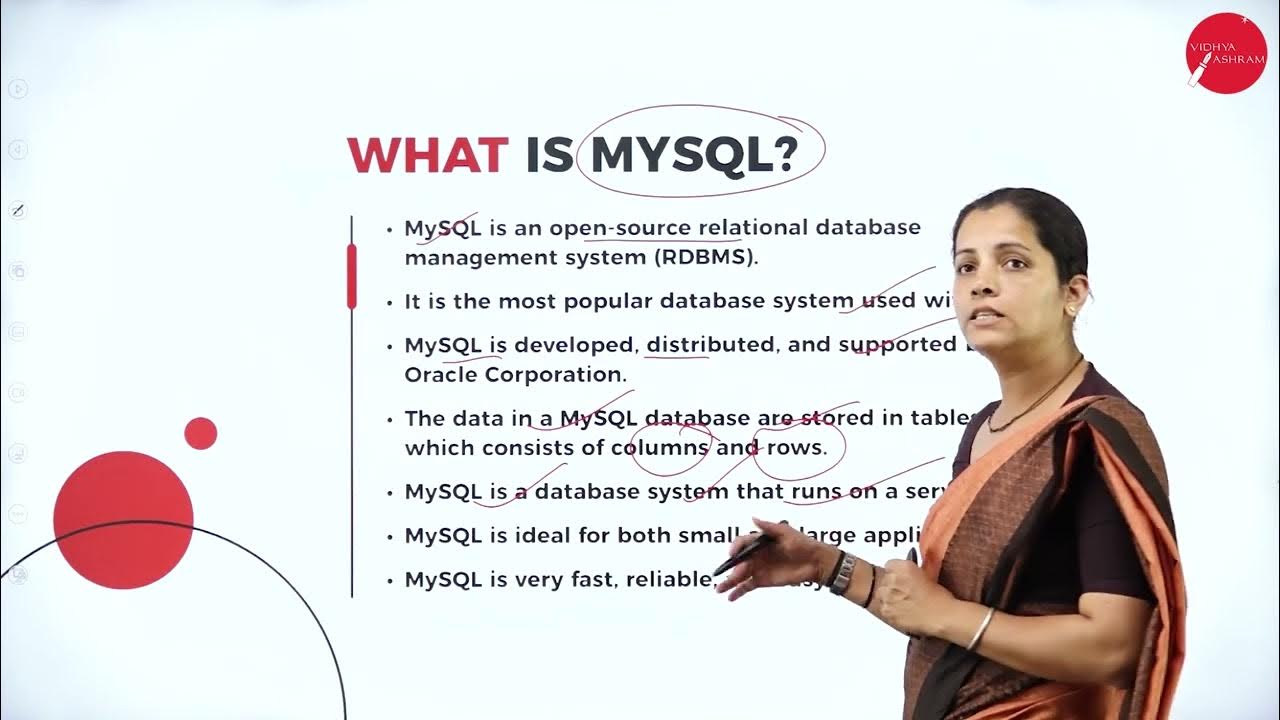BASE DE DATOS DOCUMENTALES, ESTRUCTURA Y PRINCIPIOS DE USO
Summary
TLDRThis transcript explains the concept of databases, detailing their structure and the different types of information they store, such as member directories and bibliographic data. It highlights various categories of databases, including text-based, image files, and reference databases. The text further outlines database structures, including records and fields, and methods of information retrieval. The script also covers different search techniques, including direct, hierarchical, and index-based searches, as well as complex search strategies using logical operators. The process of selecting databases, formulating search strategies, and refining searches is also discussed.
Takeaways
- 😀 A database is a structured set of information stored electronically, with each record representing a unit of information.
- 😀 A record in a database contains various fields, such as name, profession, address, and phone number.
- 😀 Databases are created and maintained to meet the specific information needs of a group, company, or society.
- 😀 Information in a database can be accessed electronically or used to generate printed products like bibliographies or reports.
- 😀 There are different types of databases: full-text databases, image files, and reference databases.
- 😀 Full-text databases contain the entire content of documents, while reference databases only store essential information for document location.
- 😀 Databases can be categorized based on access type (public, internal, or external) and access mode (local or online).
- 😀 Thematic coverage of databases can be scientific, economic, political, legal, or healthcare-related, targeting different user groups.
- 😀 Databases are classified into types based on the documentation level: simple bibliographic references, catalog databases, or those with complete content analysis.
- 😀 To perform an effective database search, it's important to understand the system, use precise search terms, and refine strategies as needed.
Q & A
What is a database?
-A database is a collection of structured information stored in records and accessible electronically, typically from a computer. Each record is an autonomous unit of information that can be organized into different fields.
What example is given for a database?
-An example provided is a member directory for an association, where each record represents a full profile of a member, including fields like name, profession, address, or phone number.
How are databases maintained and updated?
-Databases are continuously created and maintained to meet specific information needs for a collective, a business, or society as a whole.
What are the different types of databases based on their content?
-Databases can be categorized as full-text databases, image files, or referential databases. The latter contains only essential information for describing and locating documents without including the original text.
What are the five classifications of databases mentioned?
-The five classifications are: public access databases (free or not), internal use databases with restricted access (such as in non-profit institutions), databases for internal use within a company, and those designed for external users. They can also be classified by access mode (local or online), subject coverage, and target audience.
What are summary databases?
-Summary databases contain simple bibliographic references where the producer records data from the original source without analyzing the content, such as in library catalogs.
What is the role of bibliographic databases with document analysis?
-These databases provide detailed access points, often including summaries of the original document's content and relevant terms that represent the topics discussed.
What is an index of citations?
-An index of citations is a system that not only provides bibliographic descriptions of documents but also systematically records the references cited within scientific articles. This helps in bibliometric studies and tracking scientific productivity.
What are the components of a database structure?
-Databases consist of various records, each with a unique identification number. In bibliographic databases, each record corresponds to a document or part of a document, with fields such as author(s), article title, journal name, and publication year.
What are the types of search options available in databases?
-There are several search methods, including direct search (typing a word), index search (selecting from a list), hierarchical search (using codes in specific fields), and others based on logical operators, proximity, truncation, or range.
How can you conduct an effective search in a database?
-To perform an effective search, select the most appropriate database for the query, familiarize yourself with its structure, determine the precise search terms, and refine the strategy if the results are unsatisfactory by expanding or narrowing the search.
Outlines

هذا القسم متوفر فقط للمشتركين. يرجى الترقية للوصول إلى هذه الميزة.
قم بالترقية الآنMindmap

هذا القسم متوفر فقط للمشتركين. يرجى الترقية للوصول إلى هذه الميزة.
قم بالترقية الآنKeywords

هذا القسم متوفر فقط للمشتركين. يرجى الترقية للوصول إلى هذه الميزة.
قم بالترقية الآنHighlights

هذا القسم متوفر فقط للمشتركين. يرجى الترقية للوصول إلى هذه الميزة.
قم بالترقية الآنTranscripts

هذا القسم متوفر فقط للمشتركين. يرجى الترقية للوصول إلى هذه الميزة.
قم بالترقية الآنتصفح المزيد من مقاطع الفيديو ذات الصلة

What is a Vector Database? Powering Semantic Search & AI Applications

What is Database & Database Management System DBMS | Intro to DBMS

Apa Itu Data, Basis Data dan DBMS

DAY 09 | PHP AND MYSQL | VI SEM | B.CA | DATABASE HANDLING USING PHP WITH MYSQL | L3

Relational vs. Non-Relational Databases

Data Types | C# | Tutorial 5
5.0 / 5 (0 votes)
